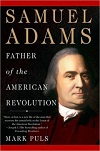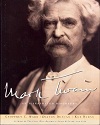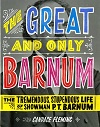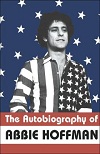On Merry-Makers and Party Animals: American Fun by John Beckman
By Jennie Yabroff

What is fun? If your answer is eating delivery Thai food while watching the new season of Girls, writer John Beckman has a bone to pick with you. Real fun, he argues, in his new book, American Fun, has nothing to do with being a "dull consumer." Fun, he writes, "is one pleasure that can’t be felt. Fun, like sex, must be had." Which is not to say eating and watching are not entertaining. They are just not fun, and the difference is crucial to the American identity, our future as well as our past.
To be fun, according to Beckman, one must break a few rules, flirt with danger, subvert authority, risk making oneself a fool. All of which are American traditions dating back to the Revolution. For four centuries we've been having fun in the form of riots, revolts, protests, happenings and be-ins, molding the shape of democracy along the way. For a closer look at some of the notable funsters Beckman name checks in his book, delve into these biographies.
 Samuel Adams by Mark Puls
Samuel Adams by Mark Puls
The descendants of Puritans, and cousin to the unbearably stuffy snob John Adams, Samuel Adams was nonetheless quite possibly the country’s first bro. At Harvard he drank and spent prodigiously, and despite his illustrious lineage, was most comfortable among the rabble class, where he preached revolution and incited the people to rise up. Today, most people know him as the guy on the beer labels, but, as Puls writes, he was one of the most critical figures to the American Revolution.
 Mark Twain by Geoffrey C. Ward, Ken Burns, and Dayton Duncan
Mark Twain by Geoffrey C. Ward, Ken Burns, and Dayton Duncan
Before he chronicled the adventures of the fun-loving Tom Sawyer and his buddy Huck Finn, Mark Twain (actually Samuel Clemens) was a newspaper man in California, covering the gold rush in breathlessly dashed-off tall tales of miners’ daring-do and brushes with death. He soon abandoned fact altogether for hoax stories about mass murders and rampaging wild animals, with the intent of skewering the sensationalist, pandering practices of the day’s newspapers. In this biography, the writers trace the life of the man who was the life of the party, or at least the page.
 The Great and Only Barnum by Candace Fleming
The Great and Only Barnum by Candace Fleming
During the Civil War, times were tough and hearts were heavy, but one man knew how to pack them in no matter how thin the pennies had to be stretched. P.T. Barnum’s travelling "American Museum" displayed sensational exhibits such as the world’s smallest man, jumbo elephants, and a dwarf he advertised as the "missing link" between man and monkey. He would go on to create the three ring circus he modestly dubbed the Greatest Show on Earth, and be credited with the phrase "a sucker’s born every minute." Part huckster, part businessman, part little kid, Barnum defined the modern circus. In this book, we see how the consummate showman created a world of fun for a desperate nation, as well as himself.
 The Autobiography of Abbie Hoffman by Abbie Hoffman
The Autobiography of Abbie Hoffman by Abbie Hoffman
In the 1960s, fun was a serious pursuit for the generation of free-thinkers who took Timothy Leary’s advice to "tune in, turn on, and drop out." But few became professional pranksters at the level of Abbie Hoffman, whose political actions included dropping dollar bills on the floor of the New York stock exchange, and attempting to levitate the Pentagon. To Hoffman, authority existed to be questioned, mocked, and subverted, and the best way to engage with the democratic process was to push it to its limits. In this autobiography, he writes about his life, and the deeply serious convictions behind his merry-making.
